November 22, 2016 – Volume 18 #8: EcoMotion 2016 Solar Innovation Tour Special
In This Issue
Flanigan’s Eco-Logic
World’s Largest Rooftop Solar Installation
Animo Leadership Academy
The Net Zero Plus Training Institute
Cathay Bank, El Monte
Broadview Nursing Home
Metro Division 13
Bunker Hill: The 19th Hole!
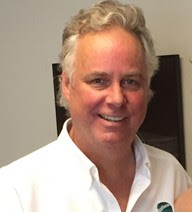
Flanigan’s Eco-Logic: The Value of Touring
This past Tuesday was another special day at EcoMotion. The date: November 15, 2016… the long-anticipated date for the EcoMotion 2016 Solar Innovation Tour. Twenty-six solar wonks visited six highly select sites. The tour was intended to inspire and motivate by kicking the tires of award-winning projects. And it did.
Solar touring? That sounds hard to justify. Why take a full day to look at a bunch of panels? Why take time out of the office when you have a proposal due, when there are billable hours to be earned? There are lots of compelling reasons, from great networking and learning for all. And, it’s hard to imagine getting access to these stellar sites.
You can feel the great spirit of the solar comrades. It’s palpable. EcoMotion baseball caps for everyone to add to the team feel. We meet for coffee, juice, and pastries at 7:30 in the lobby of our office building, the famous CalEdison Building. It was built in 1931, the first to be electrically heated and cooled building in the western United States. It was built as the headquarters for Southern California Edison, featuring 17 kinds of marble in its lobby. At the time, its 13 stories maxed out the downtown LA height limit and dwarfed all buildings around it. Today, is it dwarfed by the US Bank Tower. There’s a buzz in the air. The group is eager to meet, to board the bus, and to see the sights. Everyone is given a 12-page bound briefing packet.
Who’s on board? Twenty-six EcoMotion friends plus a few new colleagues: Dave Houghton of Avila Partners flew his plane down from San Luis Obispo. A young engineer who’s recently moved here from Austin, Texas is on board. Sophie Akins trains in from Palm Springs. We have a real estate developer on board, eager to see Broadview and to learn how this highly unusual project was permitted and built. There are climate experts on board, and solar experts, including our own Troy Strand. Christian Campisi is a long-time EcoMotion friend and colleague. There’s a video crew on board too. A pickle maker, a banker, a lawyer, and a facilities manager extraordinaire by the name of Reid McCartney all join the team.
This is not EcoMotion’s first rodeo! We’ve taken city officials and others to Germany and to Spain; We’ve been to Iceland to study geothermal systems, to Korea, to China, and more. Inversely, we’ve hosted a group of Japanese officials on a study tour of ESCOs in New Jersey and New York. We’ve hosted Italian officials to study demand-side management in Washington, Oregon, and California. More recently, we hosted a group of Korean officials from the City of Gumi to a net zero energy tour in in the Bay Area and down into Southern California. We’re good at arranging tours. Deputy Attorney for San Bernardino County, Sophie Akins, said it was the best-organized tour she’d ever been on! I credit staff – notably Shaun Miller and Michele Rolph — with that.
Quotes of the Week
“What a wonderful day of exploring local solar and making new friends. You guys did a great job! I thoroughly enjoyed the entire day. Kudos to the EcoMotion team for leading a great tour of these unique solar projects.”
– Christian Campisi, Nectar Solar
“Thanks so much for the awesome tour yesterday. I learned so much and am excited to see what can be done at the property I was telling you about yesterday.”
– Caroline Sim
“I just wanted to say thank you for putting the tour together for all of us yesterday. It was fascinating seeing what others are doing in the industry.”
-Jeremy Johnson, SkyBridge Renewables
“We were happy to be included in the tour. So good to see you again and to meet Ted.”
– Michael Fisher
“Thank you and your team very much for putting together yesterdays outing! It was both very informative and a great opportunity to share thoughts with others in the industry.”
– Joseph Pekarovic, PCS Energy
World’s Largest Rooftop Solar Installation
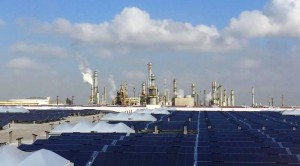 EcoMotion’s Senior Solar Specialist Michael Ware serves as MC, and has us all laughing throughout the day. He’s got the bus mike; he’s a very funny man. “You might think this is a solar tour, it’s actually the first deportation.” The bus rises the hill from Gaffey Street and arrives at Westmont. The group dons yellow hard hats and bright safety vests. Then we ascend a major scaffolding stairway to the top of the five-story warehouse. At street level, trucks come and go incessantly; three lifts are hauling crates of Sunpreme bifacial panels to the roof. This is a busy place.
EcoMotion’s Senior Solar Specialist Michael Ware serves as MC, and has us all laughing throughout the day. He’s got the bus mike; he’s a very funny man. “You might think this is a solar tour, it’s actually the first deportation.” The bus rises the hill from Gaffey Street and arrives at Westmont. The group dons yellow hard hats and bright safety vests. Then we ascend a major scaffolding stairway to the top of the five-story warehouse. At street level, trucks come and go incessantly; three lifts are hauling crates of Sunpreme bifacial panels to the roof. This is a busy place.
The rooftop has banner views of the busy Port of Los Angeles; huge freighters are unloading nearby. We’re atop one of four buildings that make up the 100-acre Westmont complex. Building 400, that we are on, is nearly a half mile long. To the north of the 100-acre distribution center campus, is the Phillips 66 refinery. What a contrast to solar; a classic clash of old and new energy resources. One is belching smoke.
Just as Westmont’s enormity struck me three weeks before, the installation again gave me the “solar goose bumps.” The tour group was clearly stunned. This is the power of the industry, its momentum in plain view. What a great start to the tour.
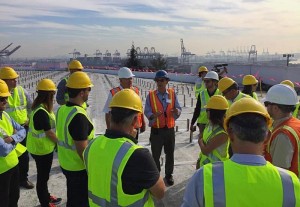 Herb Mendelsohn of PermaCity Solar welcomes the group and explains the fundamental deal. This is the largest Los Angeles Department of Water & Power Feed-In-Tariff (LADWP FIT) installation ever, by a factor of five. The project’s output will be rewarded with 13 cents/kWh for 20 years. The $38 million project is fully financed, with no money down for the distribution center owner. Instead, the owner gets brand new roofing: nearly 2 million square feet of “TPO,” thermoplastic polyolefin.
Herb Mendelsohn of PermaCity Solar welcomes the group and explains the fundamental deal. This is the largest Los Angeles Department of Water & Power Feed-In-Tariff (LADWP FIT) installation ever, by a factor of five. The project’s output will be rewarded with 13 cents/kWh for 20 years. The $38 million project is fully financed, with no money down for the distribution center owner. Instead, the owner gets brand new roofing: nearly 2 million square feet of “TPO,” thermoplastic polyolefin.
The owner also gets rent for leasing out his “roof real estate” for 20 years. The lease payments are for an asset that had been unused. And the owner gets the HVAC bonus of having solar on its roof and less heat.
We look north and see Building 300 completely adorned with panels. It is a sea of rich blue; it looks like a lake in the foreground of the refinery. We see technicians on that roof doing low-voltage wiring, creating the conduit pathways that collect from the thousands of panels there. Overall, the Westmont project will be made up of some 50,000 panels, all of which are 300 to 370 watts. Bifacial panels add to the power of the arrays, delivering 10 – 20% more power through back-lit solar.
To the South is Building 200. There, roofers are preparing new roofs, adding new skylights with burglar bars. This is one massive operation. There are workers installing PermaCity’s patented Solar Strap racking system. In another area are technicians fastening the panels to their Solar Strap legs. We watch as they use special heat guns at 1,100 degrees to fuse the Solar Strap racking into the TPO membranes.
 What a show… all in order and at a remarkable pace. Much of the labor pool is from EmPower America, a non-profit dedicated to placing U.S. Veterans in valuable jobs, providing training and pathways to stability and honor. Our group, minds blown, re-board the bus with most of the tour ahead.
What a show… all in order and at a remarkable pace. Much of the labor pool is from EmPower America, a non-profit dedicated to placing U.S. Veterans in valuable jobs, providing training and pathways to stability and honor. Our group, minds blown, re-board the bus with most of the tour ahead.
Animo Leadership Academy, Inglewood
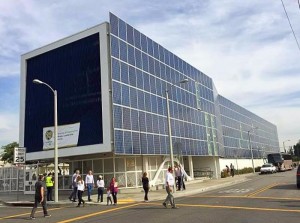 It’s not far from San Pedro to Inglewood, thankfully, as we are now behind schedule. We make up time at the Animo Leadership Academy, conveniently parking right next to the school and its 126 kW façade-mounted photovoltaic system. The 50,000 square foot school was built for $15.3 million in 2012. We have easy access to the sidewalk and its impressive solar system.
It’s not far from San Pedro to Inglewood, thankfully, as we are now behind schedule. We make up time at the Animo Leadership Academy, conveniently parking right next to the school and its 126 kW façade-mounted photovoltaic system. The 50,000 square foot school was built for $15.3 million in 2012. We have easy access to the sidewalk and its impressive solar system.
This building-integrated PV, and notably its 650 solar panels, clad the entire south side of the charter high school. The power serves about 75% of the school’s load. Located in a moderate-income neighborhood, Animo’s students score among the top 100 highest-scoring high schools in the nation. Must be the solar!
Animo is one of the Green Dot charter schools. Green Dot even has a sustainability manager, Dean Felton, who collaborated with EcoMotion on the tour. The building was designed by Larry Scarpa of Brooks + Scarpa Architects, designed for aesthetics, sustainability, and cost-effectiveness. It was built by Telacu Construction Management. The group is impressed by its bold how to buy prednisone for dogs design, by the use of solar in such a prominent role, and the school itself a symbol of our sustainable future.
The Net Zero Plus Electrical Training Institute, Commerce
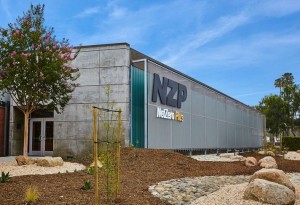 The Net Zero Plus Electrical Training Institute in Commerce, California is the nation’s largest net zero energy commercial retrofit. Plus means that it generates 25% more power on site than it uses. And the facility uses 50% less energy per square foot. Excess power is stored in batteries that can be redeployed to operate the center for up to 72 hours. The facility was retrofitted and dedicated in June of 2016.
The Net Zero Plus Electrical Training Institute in Commerce, California is the nation’s largest net zero energy commercial retrofit. Plus means that it generates 25% more power on site than it uses. And the facility uses 50% less energy per square foot. Excess power is stored in batteries that can be redeployed to operate the center for up to 72 hours. The facility was retrofitted and dedicated in June of 2016.
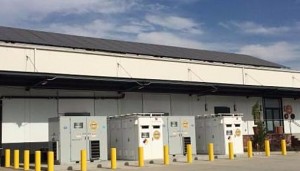 ETI is an amazing demonstration and learning center for solar, its integration with storage, energy management, and micro-grid controllers. Dan Henrichs greets our group. He’s the head of PDE, the electrical contractor responsible for the net zero plus retrofit. His colleague, Dan Cohee, shows us the site’s dashboard: Fully 5,000 points of energy use are metered, monitored, and controlled. It’s more impressive than the command deck of the Starship Enterprise. This system features real-time building performance data and is cleverly linked to an energy management system. These guys are proud as well they should be. One tour participant said that he had just seen the future.
ETI is an amazing demonstration and learning center for solar, its integration with storage, energy management, and micro-grid controllers. Dan Henrichs greets our group. He’s the head of PDE, the electrical contractor responsible for the net zero plus retrofit. His colleague, Dan Cohee, shows us the site’s dashboard: Fully 5,000 points of energy use are metered, monitored, and controlled. It’s more impressive than the command deck of the Starship Enterprise. This system features real-time building performance data and is cleverly linked to an energy management system. These guys are proud as well they should be. One tour participant said that he had just seen the future.
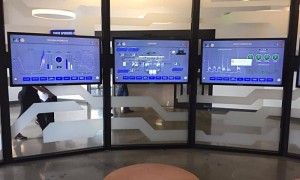 The ETI facility has 500 kW of rooftop and carport solar. Throughout the 144,000 square foot facility is LED lighting. The institute is working on DC lighting solutions too. It has EV charging stations and lots more. We see classes in process, all free for IBEW members, a means of keeping these union members up to date and competitive in new markets.
The ETI facility has 500 kW of rooftop and carport solar. Throughout the 144,000 square foot facility is LED lighting. The institute is working on DC lighting solutions too. It has EV charging stations and lots more. We see classes in process, all free for IBEW members, a means of keeping these union members up to date and competitive in new markets.
ETI is funded by the union, the International Brotherhood of Electrical Workers. The site has taken no federal or state of local incentives, nor utility incentives. It offers a host of training courses. It is focused on solar installations and now on storage, with new emphasis on microgrid controls. We have lunch in the multi-purpose room. Subway delivers. There is no let down in conversation. The tour is inspiring us all.
Cathay Bank, El Monte
 Kenny Tang welcomes the group to Cathay Bank in El Monte. It’s our fourth site!
Kenny Tang welcomes the group to Cathay Bank in El Monte. It’s our fourth site!
EcoMotion was approached by Cathay Bank some years ago. The Bank had been given four good-looking proposals for solar, all very different. The Bank liked all the vendors and reached out to EcoMotion for expertise. We served as the Bank’s Owner’s Rep, ultimately saving the Bank tens of thousands of dollars by developing a preferred solar configuration of the Bank’s nearly 300-spot parking lot, and reissuing a request for proposals.
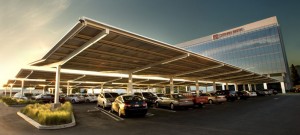 The group is off the bus and we gather in the shade of the 423 kW carport system. Kenny tells about the Bank’s decision to go solar and some of the nuances of the job. An early design didn’t match the clean and refined architectural standards of the new Bank headquarters. The Bank’s management wanted show off solar, but in a sophisticated and aesthetically pleasing way. Gensler architects were brought into the design process.
The group is off the bus and we gather in the shade of the 423 kW carport system. Kenny tells about the Bank’s decision to go solar and some of the nuances of the job. An early design didn’t match the clean and refined architectural standards of the new Bank headquarters. The Bank’s management wanted show off solar, but in a sophisticated and aesthetically pleasing way. Gensler architects were brought into the design process.
Gensler had recently designed the building’s retrofit when the Bank moved in, and provided invaluable design assistance. It had introduced the chevron-shape to the building’s design. The Bank wanted to maintain a clean look throughout and the installation there now is a beautiful addition, complementing the building architecture.
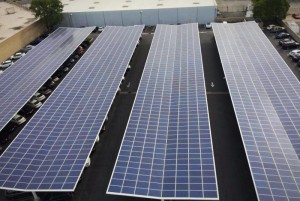 The steel I-beams that form the solar-ports are clad in metal, creating a smooth surface. No wires are visible under the panels. Wires are collected in “hat channels.” The underside of the solar ports just show off the solar with no mess. The conduits are concealed by the clad supports and run underground to the DC disconnects lined up at the side of the lot. The group elevates to the roof with its great views of these award-winning, chevron-shaped solar ports. There’s a nice cool breeze… the panels have just been cleaned.
The steel I-beams that form the solar-ports are clad in metal, creating a smooth surface. No wires are visible under the panels. Wires are collected in “hat channels.” The underside of the solar ports just show off the solar with no mess. The conduits are concealed by the clad supports and run underground to the DC disconnects lined up at the side of the lot. The group elevates to the roof with its great views of these award-winning, chevron-shaped solar ports. There’s a nice cool breeze… the panels have just been cleaned.
Broadview Nursing Home, Los Angeles
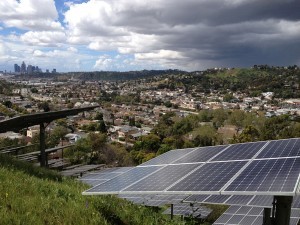 Just a few years ago, I like many other Los Angelenos, was struck by a solar installation in the Arroyo Seco, on a steep hillside off the 110 freeway heading north to Pasadena. What is that? Who built that? To me, the system looks like it’s made of dual-axis trackers, using very marginal land for clear energy power production. Turns out that this is the Broadview Nursing Home where 81 pole-mounted solar flags were installed. What a feat!
Just a few years ago, I like many other Los Angelenos, was struck by a solar installation in the Arroyo Seco, on a steep hillside off the 110 freeway heading north to Pasadena. What is that? Who built that? To me, the system looks like it’s made of dual-axis trackers, using very marginal land for clear energy power production. Turns out that this is the Broadview Nursing Home where 81 pole-mounted solar flags were installed. What a feat!
We’re struck by the Executive Director, Michael Fisher. He presents the genesis of the project, the facility’s high bills and several proposals to use the heretofore-unused hillside for power production. He explained the hurdles the Broadview faced, overcoming community objections, a City Council stop order, and then ultimately success in permitting, and even greater success in construction. Now the solar system provides for 80% of the power requirement on site.
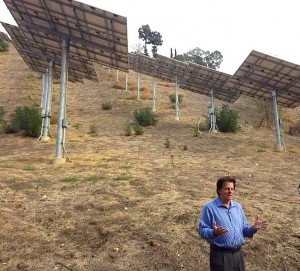 The system is now a community icon known as the “hillside solar system.” It is something that Michael Fisher and his colleagues are proud of. Both the system designer and the system installer, SolarMax, were on hand to explain the system. The group was impressed by the fact that 20-foot holes were dug for 81, 40-foot poles on such a steep hillside. A small bulldozer was used to belay the hole driller down the hill as it dug holes sequentially deeper into the canyon.
The system is now a community icon known as the “hillside solar system.” It is something that Michael Fisher and his colleagues are proud of. Both the system designer and the system installer, SolarMax, were on hand to explain the system. The group was impressed by the fact that 20-foot holes were dug for 81, 40-foot poles on such a steep hillside. A small bulldozer was used to belay the hole driller down the hill as it dug holes sequentially deeper into the canyon.
Michael is a great spokesperson, passionate about environmental protection and clearly a compassionate soul. You can see it in his eyes. He also explained to a subset of us that Broadview is a Christian Scientist facility. No medication is given to its convalescing patients. Only prayer. Michael notes that he himself has not seen a doctor since he was in the military… and smiles, noting that that was some years ago!
Metro Division 13, Los Angeles
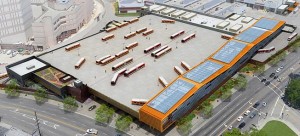 For the past four years, EcoMotion has served as Metro’s solar consultant. We’ve evaluated its thousands of parcels of land for solar, doing “deep dives” of analysis into the most promising sites including each of its maintenance divisions. They are large facilities that service both buses and trains. Metro has about 3 megawatts of installed solar capacity, all now in tip-top shape thanks to EcoMotion and Skybridge Renewables.
For the past four years, EcoMotion has served as Metro’s solar consultant. We’ve evaluated its thousands of parcels of land for solar, doing “deep dives” of analysis into the most promising sites including each of its maintenance divisions. They are large facilities that service both buses and trains. Metro has about 3 megawatts of installed solar capacity, all now in tip-top shape thanks to EcoMotion and Skybridge Renewables.
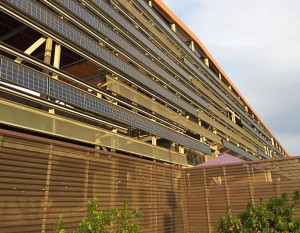 Metro’s brand-new maintenance division across the street from Union Station is unusual and visually appealing. It is known as Division 13. It looks like no other Metro maintenance division; a multi-level facility with downstairs bus maintenance and upstairs bus parking. It is orange, with both rooftop solar and a major solar array on its south wall. The facade-mounted system has unusual racking, slightly cantilevered out, providing an interesting architectural detail.
Metro’s brand-new maintenance division across the street from Union Station is unusual and visually appealing. It is known as Division 13. It looks like no other Metro maintenance division; a multi-level facility with downstairs bus maintenance and upstairs bus parking. It is orange, with both rooftop solar and a major solar array on its south wall. The facade-mounted system has unusual racking, slightly cantilevered out, providing an interesting architectural detail.
The facility is just in front of the County’s Twin Towers jail and Metro’s Central Maintenance Division. Evan Rosenberg from Metro explains that the multi-block area is slated for increasing urbanization and development, including Union Station and a high-speed rail terminus. Given this, Metro was trying to create a facility look that is modern and that blends in. He shows the group the unique solar system, explains Metro’s role with renewables, and ends our full-day tour on its green roof.
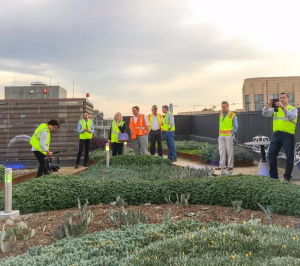
Bunker Hill: The 19th Hole!
 “Hunger makes good sauce.” And after a full day of touring and being satiated in solar details, the beer tasted better than ever at the Bunker Hill Bar and Grill. Miraculously, the bus tour ends on time at 4:30. We’re all ready for libations. EcoMotion had reserved the patio deck, and the appetizers were flowing. Spouses are invited; drinks on us.
“Hunger makes good sauce.” And after a full day of touring and being satiated in solar details, the beer tasted better than ever at the Bunker Hill Bar and Grill. Miraculously, the bus tour ends on time at 4:30. We’re all ready for libations. EcoMotion had reserved the patio deck, and the appetizers were flowing. Spouses are invited; drinks on us.
Bunker Hill Bar and Grill is in our building. We’d come full circle in just over eight hours. At this hour, the bar is noisy. It’s a happening place with a deck looking over John Fante Square. The CalEdison shares this intersection with good neighbors: The Gas Company, the Biltmore, and the Los Angeles Library. Tonight’s a perfect temperature, the appetizers keep rolling out… and our thirst is quenched. Great fun networking indeed.
We reflect on the day in various clusters: The tour was exceptional. We learned, we shared, and we are certainly inspired. We salute the sites and their developers, Westmont and Jon Port at PermaCity Solar; Brooks + Scarpa and Amimo; to PDE ,”the Dans,” and their savvy at the Electrical Training Institute; to Dunson Cheng and Kenny Tang at Cathay Bank; Michael Fisher, SolarMax, and Elite Electric at Broadview; and the Metro Environmental Services Division and notably Evan Rosenberg. These professionals, and others, have made these sites exceptional, fantastic, and tangible manifestations of what is possible on the path to a sustainable society. They recognize the value of showing off their showcases to beget more. We thank them.
Finally, special thanks to the EcoMotion team responsible for a most successful day, and a most successful EcoMotion 2016 Solar Innovation Tour. Summer of 2016 Intern Daniel Letsch from University of Edinburgh began the process. Shaun Miller did the heavy lifting, serving as project manager. He was later assisted by Michele Rolph with logistical support. Michael Ware was MC, creating fun all along the way. But first and foremost, we thank all those who had a hand in these exemplary projects, and we thank all those that attended the tour, who’s insights, experiences, curiosity, and humor made it both a productive and delightful day for us all.
